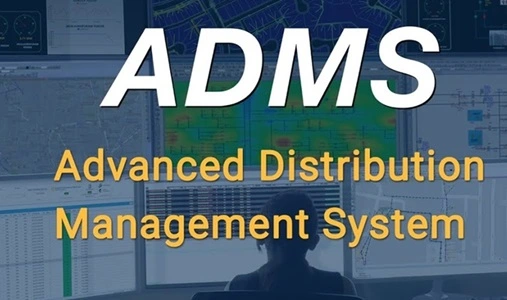As the demand for reliable and efficient energy grows, Advanced Distribution Management Systems (ADMS) are becoming essential for modern energy distribution. ADMS provides utilities with advanced tools to monitor, control, and optimise the flow of electricity across the grid in real-time. By integrating renewable energy sources, reducing outages, and improving overall grid performance, ADMS ensures that energy is distributed more efficiently and sustainably. This innovative technology enhances the stability of power networks, making it a vital solution for meeting the challenges of today’s dynamic energy landscape.

What is ADMS?
ADMS, or Advanced Distribution Management System, is an integrated platform that enables utilities to manage, monitor, and control their electric distribution networks more effectively. Unlike traditional energy management systems, ADMS offers a comprehensive set of functionalities that support real-time decision-making, automation, and improved customer service. By combining features such as outage management, distribution management, and energy optimisation into one system, ADMS enhances the overall efficiency of energy distribution.
Key Features of ADMS
ADMS is built with several advanced tools that enable utilities to address the complexities of modern energy distribution. Some of the key features include:
- Real-time Monitoring: ADMS provides utilities with real-time data on energy flow, demand, and distribution performance. This allows for immediate detection of any issues or anomalies in the system, enabling quick resolution before they escalate into major problems.
- Outage Management System (OMS): ADMS includes an OMS that helps utilities detect, locate, and restore power outages more efficiently. This not only reduces downtime but also improves customer satisfaction by ensuring a more reliable power supply.
- Fault Location, Isolation, and Service Restoration (FLISR): This feature allows ADMS to identify and isolate faults in the grid automatically. It also enables the rerouting of power to restore services to affected areas without human intervention, minimising outage durations and improving overall grid resilience.
- Voltage and Reactive Power Control: ADMS optimises voltage levels and reactive power flow, ensuring a more stable and efficient energy distribution network. This reduces energy losses and improves power quality for consumers.
- Integration of Renewable Energy: One of ADMS’s standout features is its ability to manage the integration of renewable energy sources, such as solar and wind, into the grid. By balancing the fluctuating supply of renewables with demand, ADMS ensures a more sustainable and reliable energy distribution system.
How ADMS Enhances Energy Distribution
Now that we’ve explored the key features of ADMS, let’s look at how it enhances energy distribution in more detail:
1. Increased Grid Efficiency
One of ADMS’s most significant benefits is its ability to optimise the grid’s efficiency. By providing real-time data and automating many key processes, ADMS helps utilities reduce energy losses and improve overall performance. This leads to lower operational costs and a more reliable energy supply for consumers.
2. Improved Reliability and Resilience
With the integration of advanced outage management and fault detection features, ADMS significantly improves the reliability of the grid. The ability to detect and isolate faults quickly, along with automated service restoration, ensures that outages are minimised. Additionally, by integrating renewable energy sources into the grid, ADMS supports a more resilient energy system capable of withstanding fluctuations in supply and demand.
3. Enhanced Customer Service
Consumers today expect a reliable and uninterrupted power supply. ADMS helps utilities meet these expectations by improving response times during outages and ensuring a more stable energy distribution network. With real-time monitoring and automated decision-making, utilities can provide better service to their customers, leading to higher satisfaction rates.
4. Facilitating the Integration of Distributed Energy Resources (DERs)
As the adoption of renewable energy sources such as solar panels and wind turbines increases, utilities face new challenges in managing the grid. ADMS is designed to integrate these distributed energy resources (DERs) seamlessly into the existing network. By balancing supply and demand in real-time, ADMS ensures that the grid remains stable even as the proportion of renewable energy grows.
5. Supporting Energy Transition Goals
Governments and utilities around the world are increasingly focusing on transitioning to cleaner and more sustainable energy systems. ADMS plays a critical role in this energy transition by enabling the integration of renewable energy sources and improving the overall efficiency of energy distribution. This helps utilities meet their sustainability targets while ensuring a reliable energy supply for consumers.
ADMS: A Game-Changer for Power Grids
The role of ADMS in modern energy distribution cannot be overstated. As utilities continue to face new challenges brought on by growing demand, ageing infrastructure, and the integration of renewable energy sources, ADMS provides a robust solution that enhances efficiency, reliability, and resilience. With real-time monitoring, advanced automation, and a suite of powerful tools, ADMS empowers utilities to deliver a more stable and sustainable energy supply.
As the energy landscape continues to evolve, adopting ADMS is becoming essential for utilities looking to stay ahead of the curve and meet the demands of the future. Collaboration with trusted energy technology providers can help ensure that utilities implement ADMS solutions tailored to their specific needs, driving improved performance and customer satisfaction.
Incorporating ADMS is more than just an upgrade—it’s a strategic step toward building a smarter, more resilient energy grid.
